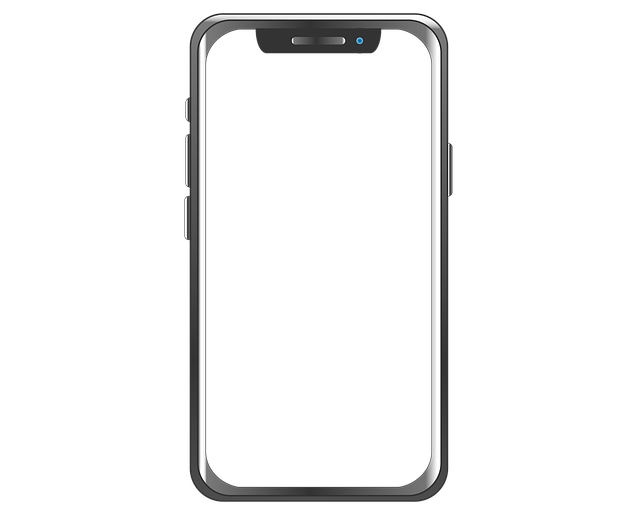In today's digital era, Mobile-Friendly Design is crucial for e-commerce success as most consumers shop via smartphones and tablets. Key aspects include faster loading times, responsive layouts, easy navigation, optimized visuals, and intuitive interactions. This strategy boosts user experience, increases conversion rates, and strengthens customer loyalty by providing a seamless, engaging shopping experience tailored to mobile users' needs. Regular testing and iteration ensure continued optimization for diverse devices and browsers.
In today’s digital era, mobile-friendly design is no longer an option but an essential for e-commerce success. With a majority of online shoppers using smartphones and tablets, understanding the unique challenges and opportunities of mobile web design is crucial. This article delves into the evolving landscape of mobile e-commerce, exploring key strategies such as enhancing user experience through intuitive navigation, optimizing speed, and engaging visual designs. We’ll uncover best practices to create a seamless, interactive, and top-notched mobile shopping journey, ensuring your business thrives in this competitive environment.
Understanding the Mobile E-commerce Landscape

In today’s digital era, understanding the mobile e-commerce landscape is non-negotiable for businesses aiming to thrive online. With a vast majority of consumers shopping via their smartphones and tablets, creating an optimal mobile-friendly design has become a game-changer. Mobile-friendly design isn’t just about having a responsive website; it’s about crafting an experience that captivates users, fosters engagement, and drives conversions on smaller screens.
Navigating this landscape requires a keen focus on simplicity, speed, and usability. Effective mobile web design prioritizes streamlined layouts, quick loading times, and intuitive navigation to ensure folks can effortlessly browse, compare, and purchase products. Remember that in the world of e-commerce, a seamless mobile experience can be the difference between a satisfied customer and a lost sale.
The Impact of Mobile-Friendly Design on User Experience

In today’s digital era, where mobile devices dominate our daily lives, a mobile-friendly design is no longer an option but an imperative for e-commerce businesses. The majority of users now access online stores through their smartphones and tablets, expecting seamless and intuitive navigation. A well-designed, mobile-optimized website enhances user experience by reducing page load times, ensuring easy accessibility, and providing a responsive layout that adapts to various screen sizes. This, in turn, increases customer satisfaction, encourages longer browsing sessions, and fosters higher conversion rates.
Mobile-friendly design plays a pivotal role in establishing a brand’s online credibility and competitiveness. Users are more likely to trust and engage with websites that offer a positive mobile experience. By prioritizing mobile users, e-commerce sites can capture a larger market share, build stronger customer relationships, and drive sustainable growth. It’s about creating an inclusive environment where every user, regardless of their device, can effortlessly explore and purchase products, ultimately transforming online shopping from a chore into a seamless and enjoyable journey.
Key Considerations for Effective Mobile Web Design

Creating a mobile-friendly design for e-commerce sites is paramount in today’s digital landscape, where a significant portion of online shopping occurs via smartphones and tablets. Key considerations for effective mobile web design include optimizing for faster loading times, ensuring responsive layouts that adapt seamlessly to different screen sizes, and prioritizing ease of navigation. Mobile users expect instant access to product information, clear call-to-actions (CTAs), and a streamlined checkout process.
Additionally, the visual design should be tailored for smaller screens, with concise content and strategically placed elements to avoid excessive scrolling. Incorporating intuitive search functionality, simplified filtering options, and high-quality, optimized images are also crucial. These elements collectively contribute to an enhanced user experience, driving higher conversion rates and fostering customer loyalty for e-commerce businesses in the mobile arena.
Optimizing Website Speed and Performance for Mobile Devices

In the realm of e-commerce, optimizing website speed and performance for mobile devices is paramount to ensuring a seamless user experience. With the majority of internet users accessing sites via their smartphones, a slow-loading mobile site can lead to increased bounce rates and lost sales. Therefore, adopting a mobile-friendly design approach is crucial. This involves compressing images, leveraging browser caching, and minimizing HTTP requests to reduce page load times. Efficient coding practices, such as utilizing responsive web design techniques, ensure that the website adapts gracefully across various screen sizes, providing a consistent experience for all users.
Furthermore, optimizing for mobile goes beyond speed. It includes streamlining navigation, ensuring touch-friendly interactions, and prioritizing content delivery networks (CDNs) to serve assets from geographically closer servers. These strategies not only enhance performance but also contribute to better search engine rankings, as Google and other major engines favor fast-loading, mobile-optimized sites in their results. Thus, investing in these optimizations is a game-changer for e-commerce businesses aiming to thrive in today’s digital landscape.
Creating a Seamless Navigation System for Small Screens

In the realm of mobile-friendly design, creating a seamless navigation system is paramount for e-commerce success on smaller screens. The challenge lies in condensing complex information and functionality into a compact interface while maintaining usability. Effective strategies include simplifying menus, utilizing accordions or hamburger icons to hide/reveal options, and ensuring touch gestures are intuitive and responsive. A well-designed navigation bar should allow users to access all essential pages with just a few taps, fostering a frictionless browsing experience.
For optimal mobile web design, consider using clear labeling, prominent call-to-action buttons, and a hierarchical structure that guides users towards desired destinations. Responsive layouts that adapt gracefully across various screen sizes further enhance accessibility. By prioritizing simplicity, intuitiveness, and ease of use, e-commerce sites can create a seamless navigation system tailored for the unique constraints and opportunities presented by mobile-friendly design.
Visual Design Strategies for Engaging Mobile Shoppers

Creating a visually appealing and engaging mobile shopping experience is paramount for e-commerce success on smaller screens. Mobile-friendly design goes beyond simple responsiveness; it requires a strategic approach that considers the unique constraints and opportunities of the mobile platform. Incorporating high-quality, optimized images with clear calls to action (CTAs) ensures shoppers can quickly navigate and interact with your store.
Utilize clean layouts with minimal clutter, prioritizing content and features essential for seamless mobile shopping. Consistent color schemes, typography, and branding reinforce a familiar and trusted experience. Additionally, incorporating elements like animated transitions or micro-interactions can add visual interest without sacrificing performance, fostering a more captivating and enjoyable user journey.
Implementing Interactive Elements to Boost User Engagement

In the realm of mobile web design for e-commerce, incorporating interactive elements is a game-changer. A mobile-friendly design that goes beyond basic functionality can significantly boost user engagement. Features like swipe gestures, animated transitions, and touch-optimized buttons create a dynamic experience, encouraging users to explore and interact with products more deeply. These interactions not only enhance the overall user journey but also increase the likelihood of conversions.
By integrating interactive elements, e-commerce sites can transform what was once a straightforward transaction into an engaging adventure. For instance, product carousels, zoom features, and 360-degree views allow shoppers to scrutinize items from various angles, fostering a sense of confidence in their purchases. Such enhancements also contribute to improved retention rates as users are more likely to spend extended periods on the site, increasing the chances of them making a sale.
Testing and Iterating: Ensuring a Top-Notch Mobile E-commerce Experience

Testing and iterating are vital components in crafting a seamless mobile e-commerce experience. With numerous devices, screen sizes, and browser versions available, it’s crucial to ensure your site functions flawlessly across the board. Implement comprehensive testing on various models, including older ones, to cater to a broad user base. Utilize tools that simulate different environments, such as responsive design testing platforms, to identify potential issues.
Regularly gather user feedback and analyze metrics to pinpoint problem areas. Iterate your mobile-friendly design based on these insights, making incremental improvements over time. This continuous process ensures your e-commerce platform remains optimized, providing users with a consistent, positive experience that drives conversions and fosters customer loyalty.
